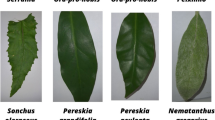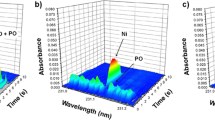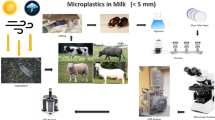Abstract
In this study, it was aimed to determine the elemental composition of 47 propolis samples collected from different regions of Turkey by X-ray fluorescence spectroscopy. According to the results, the most abundant elements in propolis samples were the Ca, K, and Si with the mean values as 1556, 1383, and 731 mg/kg, respectively. Additionally, there were high degrees of positive and strong correlations of Al with S (0.925) and Fe (0.926) and Ca with Mg (0.970). According to cluster analysis results, the Aegean, Marmara, and Mediterranean regions showed strong similarities, whereas Southeastern Anatolia propolis samples were remarkably different. The elements considered as toxic for human and environmental health such as Mn, Ni, Pb, Sn, and W were at the trace amounts as < 10 mg/kg. When assuming 1 g raw propolis is consumed daily by a 60-kg adult, the analyzed propolis samples were not a source carrying the negative effects of these elements. However, they could be an indicator of environmental pollution.


Similar content being viewed by others
Data Availability
Datasets used in the present study will be made available by the corresponding author upon request without any hesitation.
References
Bankova V, Popova M, Trusheva B (2014) Propolis volatile compounds: chemical diversity and biological activity: a review. Chem Cent J 8(1):1–8
Alvarez-Suarez JM (2017) Bee products-chemical and biological properties: Springer
Pasupuleti VR, Sammugam L, Ramesh N, Gan SH (2017) Honey, propolis, and royal jelly: a comprehensive review of their biological actions and health benefits. Oxid Med Cell Longev 2017:1–21
Kasote DM (2017) Propolis: a neglected product of value in the Indian beekeeping sector. Bee World 94(3):80–83
Sforcin J (2007) Propolis and the immune system: a review. J Ethnopharmacol 113(1):1–14
Ali AM, Kunugi H (2020) Apitherapy for age-related skeletal muscle dysfunction (sarcopenia): A review on the effects of royal jelly, propolis, and bee pollen. Foods 9(10):1362
Woźniak M, Mrowczynska L, Waśkiewicz A, Rogoźinski T, Ratajczak I (2019) The role of seasonality on the chemical composition, antioxidant activity and cytotoxicity of Polish propolis in human erythrocytes. Rev Bras Farmacogn 29(3):301–308
Roman A, Madras-Majewska B, Popiela-Pleban E (2011) Comparative study of selected toxic elements in propolis and honey. J Apic Sci 55(2):97–106
Morais S, Costa FG, Pereira MdL (2012) Heavy metals and human health. Environ Health-Emerg Issues Pract 10(1):227–245
Matin G, Kargar N, Buyukisik HB (2016) Bio-monitoring of cadmium, lead, arsenic and mercury in industrial districts of Izmir, Turkey by using honey bees, propolis and pine tree leaves. Ecol Eng 90:331–335
Bogdanov S (2006) Contaminants of bee products. Apidologie 37(1):1–18
Formicki G, Greń A, Stawarz R, Zyśk B, Gał A (2013) Metal content in honey, propolis, wax, and bee pollen and implications for metal pollution monitoring. Pol J Environ Stud 22(1):99–106
Schönenberger J, Momose T, Wagner B, Leong W, Tarnawski V (2012) Canadian field soils I. Mineral composition by XRD/XRF measurements. Int J Thermophys 33(2):342–362
Yalcin MG, Battaloglu R, Ilhan S, Tümüklü A, Topuz D (2007) Heavy metal contamination along the Nigde-Adana highway, Turkey. Asian J Chem 19(2):1506–1518
Yalcin MG, Coskun B, Nyamsari DG, Yalcin F (2019) Geomedical, ecological risk, and statistical assessment of hazardous elements in shore sediments of the Iskenderun Gulf, Eastern Mediterranean, Turkey. Environ Earth Sci 78(15):1–28
Dogan M, Silici S, Saraymen R, Ilhan I (2006) Element content of propolis from different regions of Turkey. Acta Aliment 35(1):127–130
Aksoy C, Atabay MM, Tirasoglu E, Koparan ET, Kekillioglu A (2017) Elemental content profiles in propolis from several cities of Turkey. Func Foods Health Dis 7(8):661–670
Şahinler N, Gül A, Şahinler S (2017) Heavy metals and trace elements content of different propolis types. Eur Int J Sci Technol 6(3):21–25
Tutun H, Aluç Y, Kahraman HA, Sevin S, Yipel M, Ekici H (2022) The content and health risk assessment of selected elements in bee pollen and propolis from Turkey. J Food Compos Anal 105:104234
Moyo S, Mphuthi D, Cukrowska E, Henshilwood CS, van Niekerk K, Chimuka L (2016) Blombos cave: Middle stone age ochre differentiation through FTIR, ICP OES, EDXRF and XRD. Quat Int 404:20–29
Chojnacka K, Samoraj M, Tuhy Ł, Michalak I, Mironiuk M, Mikulewicz M (2018) Using XRF and ICP-OES in biosorption studies. Molecules 23(8):2076
González-Martín MI, Escuredo O, Revilla I, Vivar-Quintana AM, Coello MC, Riocerezo CP, Moncada GW (2015) Determination of the mineral composition and toxic element contents of propolis by near infrared spectroscopy. Sensors 15(11):27854–27868
Tosic S, Stojanovic G, Mitic S, Pavlovic A, Alagic S (2017) Mineral composition of selected Serbian propolis samples. J Apic Sci 61(1):5–15
Gong S, Luo L, Gong W, Gao Y, Xie M (2012) Multivariate analyses of element concentrations revealed the groupings of propolis from different regions in China. Food Chem 134(1):583–588
Bonvehí JS, Bermejo FO (2013) Element content of propolis collected from different areas of South Spain. Environ Monit Assess 185(7):6035–6047
Finger D, Kelte Filho I, Torres YR, Quináia SP (2014) Propolis as an indicator of environmental contamination by metals. Bull Environ Contam Toxicol 92(3):259–264
Hodel KV, Machado BA, Santos NR, Costa RG, Menezes-Filho JA, Umsza-Guez MA (2020) Metal content of nutritional and toxic value in different types of Brazilian propolis. Sci World J 2020:1–9
TUIK (2021) Turkish Statistical Institute. www.tuik.gov.tr, last accessed 03/16/2021
Unal Y, Kindap T, Karaca M (2003) Redefining the climate zones of Turkey using cluster analysis. Int J Climatol: J Royal Meteorol Soc 23(9):1045–1055
Beto JA (2015) The role of calcium in human aging. Clin Nutr Res 4(1):1–8
Karppanen H, Karppanen P, Mervaala E (2005) Why and how to implement sodium, potassium, calcium, and magnesium changes in food items and diets? J Hum Hypertens 19(3):S10–S19
Eliseeva T, Zemlianyi O (2020) Potassium and its effects on human health. In Scientific achievements of modern society. Abstracts of the 9th International scientific and practical conference. Cognum Publishing House. Liverpool, United Kingdom, pp 91-96
Silici S, Uluozlu OD, Tuzen M, Soylak M (2016) Honeybees and honey as monitors for heavy metal contamination near thermal power plants in Mugla, Turkey. Toxicol Ind Health 32(3):507–516
Kılıç Altun S, Dinç H, Paksoy N, Temamoğulları FK, Savrunlu M (2017) Analyses of mineral content and heavy metal of honey samples from south and east region of Turkey by using ICP-MS. Int J Anal Chem 2017:1–6
Khanam R, Kumar A, Nayak A, Shahid M, Tripathi R, Vijayakumar S, Bhaduri D, Kumar U, Mohanty S, Panneerselvam P (2020) Metal (loid) s (As, Hg, Se, Pb and Cd) in paddy soil: Bioavailability and potential risk to human health. Sci Total Environ 699:134330
Martin S, Griswold W (2009) Human health effects of heavy metals. Environ Sci Technol Briefs Citizens 15:1–6
Acknowledgements
The authors would like to thank Akdeniz University for supporting this research.
Author information
Authors and Affiliations
Contributions
Ceren MUTLU: investigation, methodology, formal analysis, writing original draft. Özge ÖZER-ATAKOĞLU: investigation, methodology, formal analysis. Mustafa ERBAŞ and Mustafa Gürhan YALÇIN: supervision and editing.
Corresponding author
Ethics declarations
This research does not contain any studies with human or animal subjects. Informed consent is not applicable.
Disclosure statements
The manuscript was read and approved by co-authors and there is no conflict of interest. This research does not contain any studies with 286 human or animal subjects. Informed consent is not applicable.
Additional information
Publisher's Note
Springer Nature remains neutral with regard to jurisdictional claims in published maps and institutional affiliations.
Rights and permissions
About this article
Cite this article
Mutlu, C., Özer-Atakoğlu, Ö., Erbaş, M. et al. Advances in the Elemental Composition Analysis of Propolis Samples from Different Regions of Turkey by X-Ray Fluorescence Spectrometry. Biol Trace Elem Res 201, 435–443 (2023). https://doi.org/10.1007/s12011-022-03152-3
Received:
Accepted:
Published:
Issue Date:
DOI: https://doi.org/10.1007/s12011-022-03152-3




